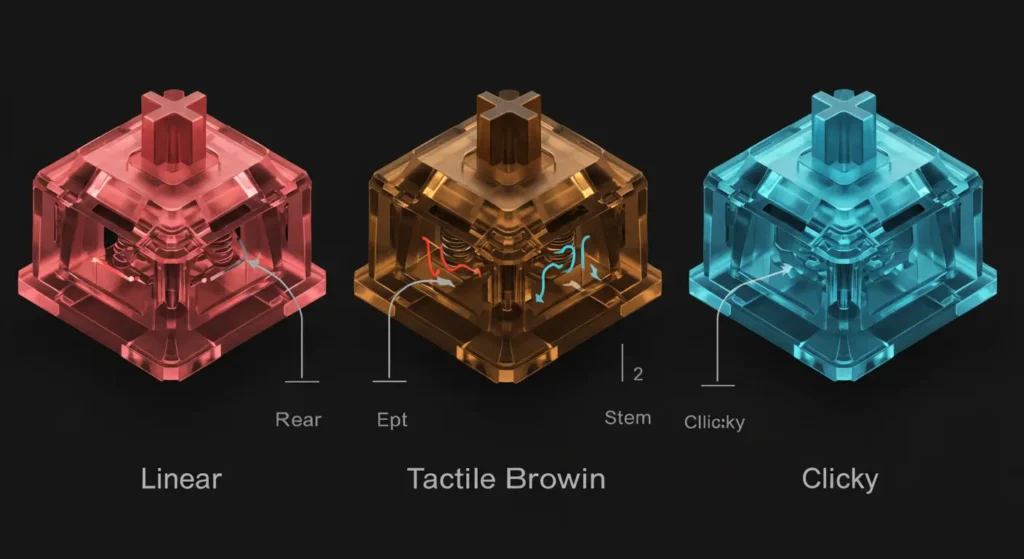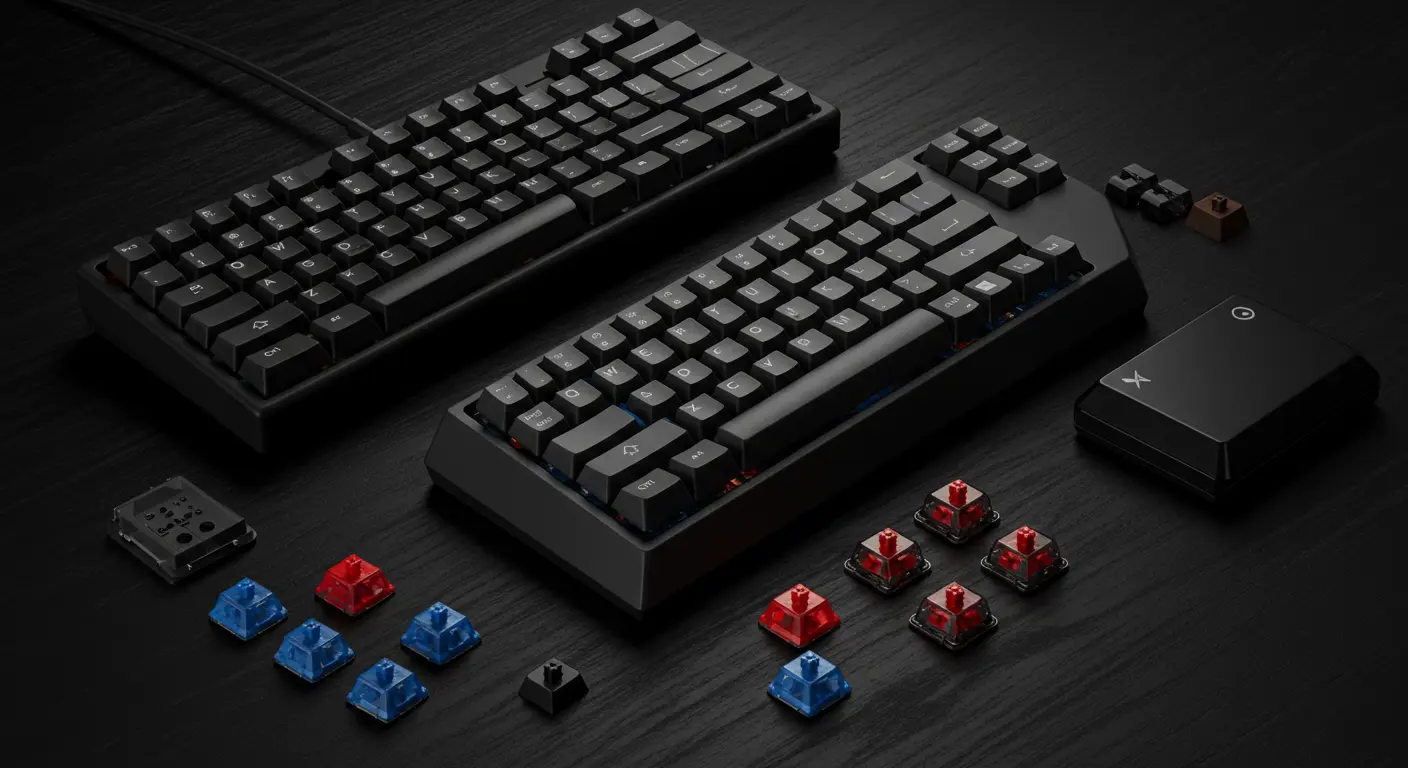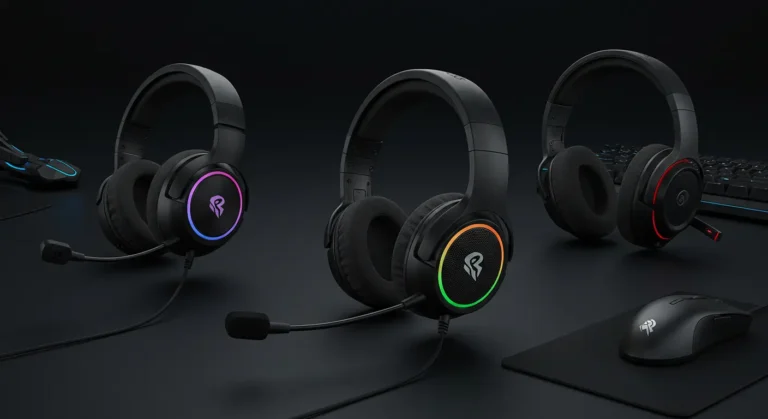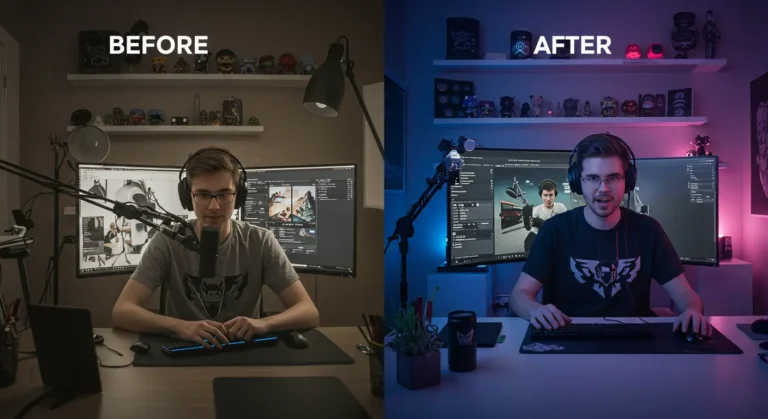How to Choose Your Perfect Mechanical Keyboard: An Ultimate 2025 Guide
In the world of gaming and high-performance computing, few peripherals command as much loyalty and passion as the mechanical keyboard. It’s more than just a tool for typing; it’s the primary interface for your digital life, a statement of personal style, and a critical component for competitive success. But what makes these keyboards so special? And with a dizzying array of switches, sizes, and features available in 2025, how do you choose the one that’s perfect for you? This ultimate guide will demystify the world of mechanical keyboards, helping you understand the technology “beyond the click” to find your ideal match.

What is a Mechanical Keyboard, Really?
At its core, the difference between a mechanical keyboard and a standard membrane keyboard lies beneath the keycaps. Instead of a single rubber sheet, a mechanical keyboard has an individual mechanical switch under every single key. This design provides superior durability, a more precise and consistent typing feel, and a level of tactile and auditory feedback that membrane keyboards simply cannot replicate. Each keypress is a distinct, satisfying action, which is why developers, writers, and especially gamers, swear by them.
The Heart of the Keyboard: A Deep Dive into Switches
The most crucial decision you’ll make is choosing your switch type, as it defines the entire feel and sound of the keyboard. In 2025, the main categories remain, but with more refined options than ever.
Linear Switches (e.g., Cherry MX Red, Black)
- What they are: These switches offer a smooth, consistent keypress from top to bottom with no tactile bump or audible click.
- Who they’re for: Gamers often prefer linear switches for their speed and consistency. The smooth, uninterrupted travel allows for rapid, repeated keystrokes, which is ideal for fast-paced action and competitive games where split-second reactions matter. They are also the quietest of the mechanical switch types.
Tactile Switches (e.g., Cherry MX Brown, Clear)
- What they are: Tactile switches provide a noticeable “bump” in the middle of the keypress, signaling that the keystroke has been registered. They are generally quieter than clicky switches.
- Who they’re for: These are the ultimate all-rounders. The tactile feedback is excellent for typing as it helps improve accuracy and reduce bottoming-out (pressing the key all the way down), making for a more comfortable experience. They are also perfectly viable for gaming, offering a good middle ground for those who use their keyboard for both work and play.
Clicky Switches (e.g., Cherry MX Blue, Green)
- What they are: These are the loudest and most distinct switches. In addition to a tactile bump, they produce a sharp, audible “click” sound at the point of actuation.
- Who they’re for: Primarily for typists who love definitive, typewriter-like feedback. The sound can be incredibly satisfying and can lead to a very rhythmic typing experience. However, be warned: their loud noise can be disruptive in shared office spaces or during late-night gaming sessions with an open mic.
Size Matters: Finding Your Perfect Keyboard Layout
Mechanical keyboards come in various sizes, each catering to different needs for desk space and functionality.

Full-Size (100%)
- What it is: The traditional layout with the full set of keys, including the number pad, function row, and navigation cluster.
- Who it’s for: Users who do a lot of data entry, rely heavily on the number pad, or simply want a keyboard with every possible key at their disposal. It requires the most desk space.
Tenkeyless (TKL or 87%)
- What it is: A full-size keyboard with the number pad chopped off. It retains the function row and dedicated navigation keys.
- Who it’s for: A very popular choice among gamers. It frees up significant desk space for mouse movement without sacrificing the crucial arrow and navigation keys. It’s a fantastic balance of functionality and compactness.
Compact (75%, 65%, 60%)
- What it is: These ultra-compact layouts remove more keys to save maximum desk space. A 65% keyboard, for example, typically removes the function row and some navigation keys but keeps the arrow keys. A 60% keyboard goes further, often removing the arrow keys entirely (accessible via a function layer).
- Who it’s for: Minimalists, gamers who need maximum mouse space, and enthusiasts who enjoy the aesthetic and portability of a small keyboard. It requires getting used to function layers (pressing a key like ‘Fn’ plus another key) to access missing keys.
Key Features to Look For in 2025
Beyond switches and size, here are some other crucial features:
- Build Quality & Materials: Look for sturdy frames made of aluminum or high-quality ABS plastic. A solid build prevents keyboard flex and adds to a premium feel.
- Keycaps (PBT vs. ABS): Keycaps are the plastic covers for the switches. PBT plastic is more durable, textured, and resistant to the “shining” effect that develops on ABS keycaps over time. PBT is generally considered a more premium option.
- Connectivity (Wired vs. Wireless): Modern low-latency 2.4GHz wireless technology is now virtually indistinguishable from wired for gaming. Many keyboards also offer Bluetooth for connecting to multiple devices. Consider battery life if you go wireless.
- Hot-Swappable Sockets: This is a major feature for enthusiasts. A hot-swappable keyboard allows you to change the mechanical switches easily without any soldering. This means you can experiment with different switch types to find your perfect feel.
- Customization and Software: Look for keyboards with software that allows for remapping keys, creating macros, and customizing RGB lighting.
Our Top Mechanical Keyboard Picks for 2025 (Illustrative)
Here are a few fictional examples representing the kind of high-quality keyboards you should look for in 2025, perfect for your affiliate links:
Best for Pure Gaming: The “SpiritGlitch Phantom X1” (TKL, Hot-Swappable)
- This keyboard focuses on pure performance with ultra-low latency wireless, hot-swappable sockets for custom switches, durable PBT keycaps, and a robust aluminum frame. Its TKL layout provides ample mouse room for competitive FPS players.
Best for Typing & Productivity: The “CodeWeaver Pro” (Full-Size, Tactile)
- Designed for those who type all day. It features exceptionally comfortable ergonomic keycaps, quiet but satisfying tactile switches, a full-size layout with a numpad, and premium sound-dampening foam for a refined typing sound.
Best Wireless Compact: The “Nomad 65” (65%, Tri-Mode Connectivity)
- Perfect for minimalists and on-the-go users. This 65% keyboard offers tri-mode connectivity (Wired, 2.4GHz, Bluetooth), a long-lasting battery, and a stylish, compact design without sacrificing dedicated arrow keys.
Frequently Asked Questions (FAQ)
- What is the best mechanical switch for gaming?
- While subjective, Linear switches (like Reds) are often preferred by competitive gamers for their speed and consistency. However, many gamers also enjoy Tactile switches (Browns) for their versatility.
- Are mechanical keyboards really better for typing?
- Yes, for most people. The distinct feedback from each keypress can improve typing speed, accuracy, and reduce finger fatigue compared to mushy membrane keyboards.
- What does “hot-swappable” mean?
- It means you can pull out the mechanical switches from the keyboard’s circuit board and plug in new ones without needing to desolder or solder. It allows for easy customization and repair.
- Are expensive mechanical keyboards worth it?
- It depends on your needs. More expensive keyboards typically offer better build quality (aluminum vs. plastic), more premium keycaps (PBT), more features (hot-swappability, wireless), and a more refined sound and feel due to better internal construction (gaskets, foam). For enthusiasts, the investment is often worth it.
Conclusion: Your Perfect Keyboard Awaits
Choosing a mechanical keyboard in 2025 is a deeply personal journey. It’s about finding the right combination of feel, sound, size, and features that complements your workflow and playstyle. By understanding the fundamentals of switches, layouts, and key features, you are now equipped to look beyond the marketing hype and make an informed decision. The perfect keyboard won’t just improve your performance; it will make every single keystroke a more satisfying and enjoyable experience.







